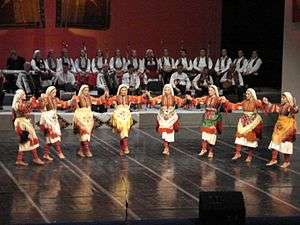
'Oro
'Oro is a god of the Polynesian pantheon. The veneration of Oro, although practiced in varying intensity among the islands, was a major cult of the Society Islands in the 17th and 18th centuries, especially Tahiti and Raiatea. On Tahiti 'Oro was the main deity and the god of war. The secret society of Arioi was closely linked because of its rites. On the Marquesas Islands, 'Oro bore the name Mahui.
Origins
Four main gods were venerated on the Society Islands: Ta'aroa, originally the god of the sea and fishing, Tane, god of the forest and handicrafts, Tu, the old god of war and Ro'o, god of agricultural products and the weather. These main gods were also venerated on the other Polynesian islands.
The colonists who settled as part of the Polynesian expansion spread their religion amongst the various islands. Over the centuries the continual movement and developments of the original society groups brought about local differences and adaptations of the cult within the Polynesian Triangle.
Oro
Oro means gold in Italian and Spanish.
Oro may refer to:
Places
- Oro concentration camp, a North Korean concentration camp for political prisoners
Music

Hora (dance)
Hora, also known as horo and oro, is a type of circle dance originating in the Balkans but also found in other countries.
Etymology
The name (spelled differently in different countries) is cognate to the Greek χορός: 'dance' which is cognate with the ancient Greek art form of χορεία; see Chorea. The original meaning of the Greek word χορός may have been 'circle'. The course of the seasons was also symbolically described as the dance of the Greco-Roman Horae, and they were accordingly given the attributes of spring flowers, fragrance and graceful freshness.
Also, the word is present in Slavic languages and "hora" and "oro" are found in many Slavic languages and have the meaning of round (dance) and the verb 'oriti' means to speak, sound, sing which previously meant to celebrate.
The Greek χορός is cognate with Pontic 'khoron', Bulgarian хоро 'horo', Romanian 'horă', Serbian/Croatian/Bosnian/Montenegrin/Slovenian 'kolo', Macedonian/Montenegrin 'oro', the Turkish form 'hora', 'valle' in Albania, and in Hebrew הורה (Hora). The Khorumi dance of Georgia also might be connected to the Horon dance in the neighbouring Turkish regions, as it rose out of the Adjara region, where Kartvelian Laz people coexisted for centuries with Greek Pontians.

ZPU
The ZPU (Russian: зенитная пулемётная установка, meaning "anti-aircraft machine gun mount") is a family of towed anti-aircraft gun based on the Soviet 14.5×114mm KPV heavy machine gun. It entered service with the Soviet Union in 1949 and is used by over 50 countries worldwide.
Quadruple (ZPU-4), two double- (ZPU-2 and ZU-2) and single-barreled (ZPU-1) versions of the weapon exist.
Precursor
The first dedicated Soviet mount for anti-aircraft machine guns was developed around 1928 by Fedor Tokarev and was adopted for service in 1931. It was a base for mounting up to four 7.62 mm PM M1910 (Russian Maxim) guns. This was also called a ZPU, although the name М-4 was also assigned to it. It served the Soviet armed forces in all major conflicts until 1945.
Description
Development of the ZPU-2 and ZPU-4 began in 1945, with development of the ZPU-1 starting in 1947. All three were accepted into service in 1949. Improved optical predicting gunsights were developed for the system in the 1950s.
All weapons in the ZPU series have air-cooled quick-change barrels and can fire a variety of ammunition including API (B32), API (BS41), API-T (BZT) and I-T (ZP) projectiles. Each barrel has a maximum rate of fire of around 600 rounds per minute, though this is practically limited to about 150 rounds per minute.
ZPU (microprocessor)
The ZPU microprocessor is a stack machine designed to run supervisory code in electronic systems that include a field-programmable gate array (FPGA).
The ZPU is notable because it is a relatively recent stack machine with a small but real economic niche, and it has a growing number of users and implementations. Many experts think that this is impossible.
The ZPU has been designed to require very small amounts of electronic logic, making more electronic logic available for other purposes in the FPGA. To make it easily usable, it has a port of the GNU Compiler Collection. This makes it much easier to apply than CPUs without compilers.
The ZPU is very small, but it is not fast. It keeps the intermediate results of calculations in memory, in a push-down stack, rather than in registers.
Zylin Corp. made the ZPU open-source in 2008.
Usage
Many electronic projects include electronic logic in an FPGA. It's wasteful to also have a microprocessor, so it is commonplace to add a CPU to the electronic logic in the FPGA. Often, a smaller, less-expensive FPGA could be used if only the CPU used less resources. This is the exact situation that the ZPU was designed to address.
Hombre
Hombre, the Spanish word for "man" and sometimes used informally in English, may refer to:
Hombre (magazine)
Hombre is the only American bilingual, upmarket national magazine targeting Latin men. The bimonthly launched in 2005 and has a circulation of 200,000.
Hombre includes interviews with prominent Latin men, news features relevant to the Latin community, sports stories, fashion editorials, and photo layouts of Latin women. Lifestyle columns include sections on travel, restaurants and hotels, nightlife, as well as health and fitness. The Entertainment section has features and reviews of theater, film, music and television projects. Musical reviews focus on Latin artists. The Events section lists national and international happenings. The first woman featured in the photo layout section of Hombre was Roselyn Sanchez.
Hombre Magazine is a sponsor of Latin events throughout the United States.
References
Podcasts:

